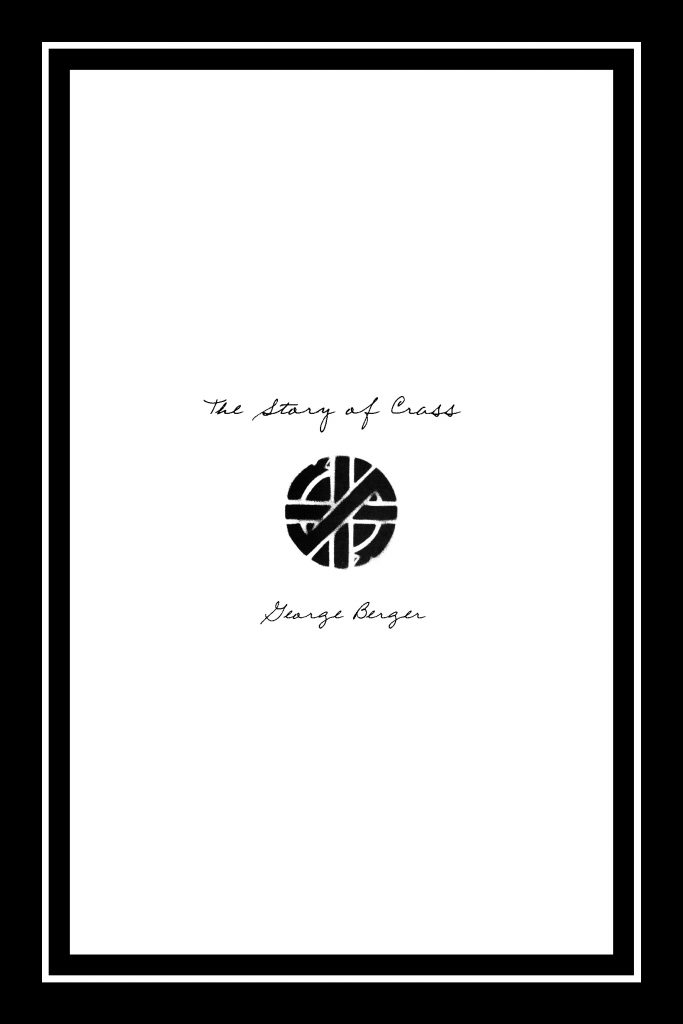By Stefan Christoff
Hour.ca
September 30th, 2010
The Story of Crass traces the creative history and social-activist roots of the U.K. punk rockers
Punk
rock culture is diverse, from frontline anarchist squatters to
candy-coded punk-pop radio hits, yet across the spectrum it is without
question that legendary U.K. collective Crass carved into the rough
edges of punk-rock history.
Crass burst onto the U.K. punk scene in the late ’70s, delivering a sound and political practice that challenged and reshaped the genre. Spitfire lyrics aiming at state and religious authorities rode over more vague artistic renditions on the punk sound, while Crass collective members actively joined grassroots campaigns of the era, putting lyrics into practice as social activists.
The Story of Crass, by George Berger, offers a striking and deeply reflective account on the formation and trajectory of Crass. Beyond punk, the book offers key insights into the political context in Britain during the post-hippie, economic-depression era of the late ’70s that fostered the emergence of punk culture in the U.K.
Iconic playwright Bertolt Brecht’s famous meditation “Art is not a mirror to reflect reality, but a hammer with which to shape it,” aptly begins a key chapter: art for the band is vividly described in the biography’s pages as a creative process directly tied to confronting perceived social injustices of the time.
Crass’ unique take on punk culture has earned the group an enduring status in contemporary punk history, yet The Story of Crass points out the anti-stardom of the group, especially at their height, as well as delving into the origins of publicity-shy practices of celebrated revolutionary music collectives like Montreal’s own Godspeed You! Black Emperor, who continue to baffle mainstream music press even today.
“Perhaps unbeknown to the members of Crass, their deliberate policy of anonymity, mixed with tales of their remote farmhouse in the country, lent them a certain mystique in punk circles,” writes Berger. “Everyone wants to know the answer to a secret, as any stage magician or amateur-physiologist will testify.”
In fact, one of the many open secrets to Crass, as the books tells, is their expression of an honest grassroots rage at the social injustices of the Margret Thatcher era. In weaving together music, political activism and artistic experimentation during a period rife with social unrest, Crass made their mark on contemporary cultural history.
The book goes beyond slogans to detail the multiple artistic influences on the band, which famously combined sound collage, live projections, noise guitars, punk rock vocalizations and sampling at a time before computer-made music. It is certain that the resonance of Crass is also linked to their groundbreaking artistic experimentation, as the collective orchestrated not only a unique sound but some of the first national graffiti projects in the U.K.
“Another thread of
Crass’ multimedia assault on conformity came in the forum of the stencil
graffiti campaign,” outlines Berger. “The stencil graffiti craze became
a minor revolution in the U.K. for a while as people the length and
breadth of the country followed Crass’ lead and took up political
sloganeering, subverting adverts (‘sub-vertising’) and society
throughout the land.” The Story of Crass also points to the lasting
cultural influence of Crass graffiti on street art culture, citing
globally celebrated artists such as Banksy.
The Story of Crass
goes on to trace the punk culture scene that gave birth to Crass via
subcultures of the late ’60s, breaking a punk subculture taboo in
highlighting a historical trajectory between the hippie era and punk
rock that would make Sid Vicious roll over in his grave. But Crass’
attempt to articulate revolutionary dreams, in action and sound, reaches
beyond cultural labels like punk rock. Key to understanding the
continuing relevance of Crass today is the universal nature to the
anarchist ideas that fuelled the group.







